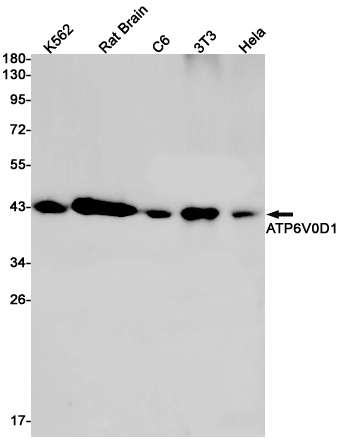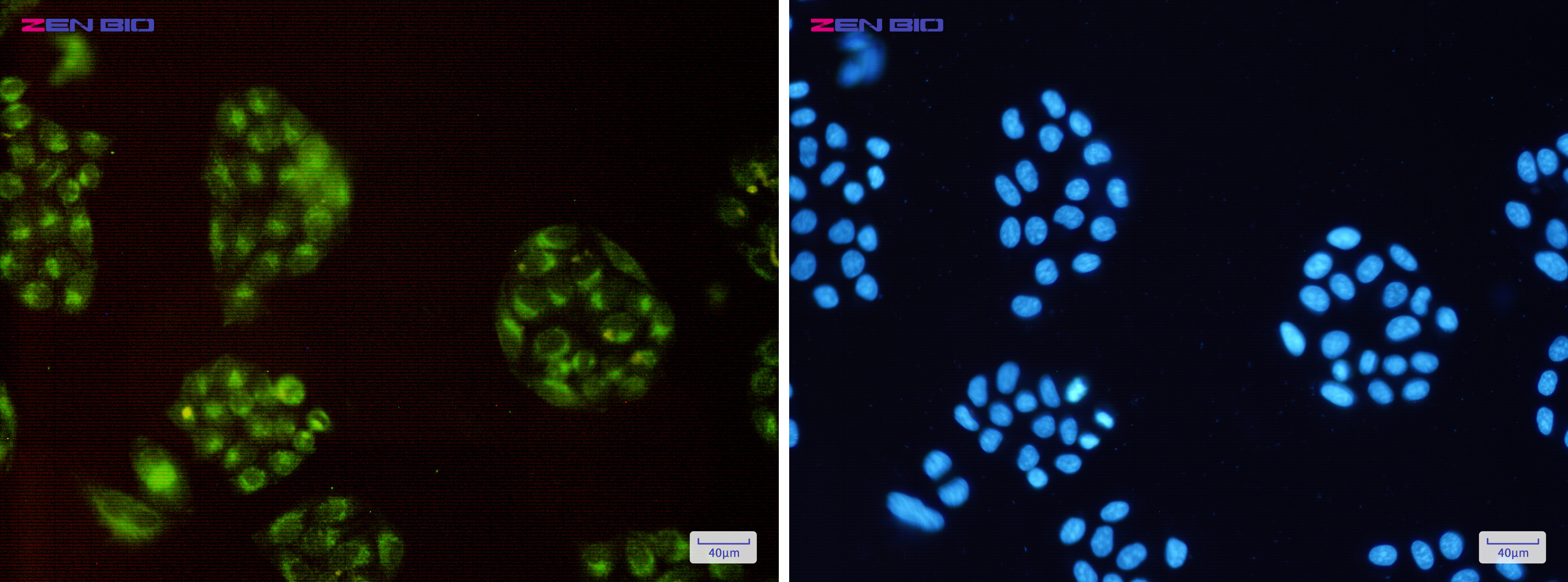-
Product Name
Anti-ATP6V0D1 Rabbit antibody
- Documents
-
Description
ATP6V0D1 Rabbit polyclonal antibody
-
Tested applications
WB, IHC-P, ICC/IF, FC, IP
-
Species reactivity
Human, Mouse, Rat
-
Alternative names
P39; VATX; VMA6; ATP6D; ATP6DV; VPATPD antibody
-
Isotype
Rabbit IgG
-
Preparation
Antigen: Recombinant protein of human ATP6V0D1
-
Clonality
Polyclonal
-
Formulation
Supplied in 50nM Tris-Glycine(pH 7.4), 0.15M Nacl, 40%Glycerol, 0.01% sodium azide and 0.05% BSA.
-
Storage instructions
Store at -20°C. Stable for 12 months from date of receipt.
-
Applications
WB: 1/1000
IHC: 1/20
ICC/IF: 1/50
FC: 1/20
IP: 1/20
-
Validations

Western blot detection of ATP6V0D1 in K562,Rat Brain,C6,3T3,Hela cell lysates using ATP6V0D1 Rabbit pAb(1:1000 diluted).Predicted band size:40kDa.Observed band size:40kDa.

Immunocytochemistry of ATP6V0D1(green) in Hela cells using ATP6V0D1 Rabbit pAb at dilution 1/50, and DAPI(blue)
-
Background
Swiss-Prot Acc.P61421.Subunit of the integral membrane V0 complex of vacuolar ATPase. Vacuolar ATPase is responsible for acidifying a variety of intracellular compartments in eukaryotic cells, thus providing most of the energy required for transport processes in the vacuolar system. May play a role in coupling of proton transport and ATP hydrolysis . May play a role in cilium biogenesis through regulation of the transport and the localization of proteins to the cilium . In aerobic conditions, involved in intracellular iron homeostasis, thus triggering the activity of Fe2+ prolyl hydroxylase (PHD) enzymes, and leading to HIF1A hydroxylation and subsequent proteasomal degradation (PubMed:28296633).
Related Products / Services
Please note: All products are "FOR RESEARCH USE ONLY AND ARE NOT INTENDED FOR DIAGNOSTIC OR THERAPEUTIC USE"
